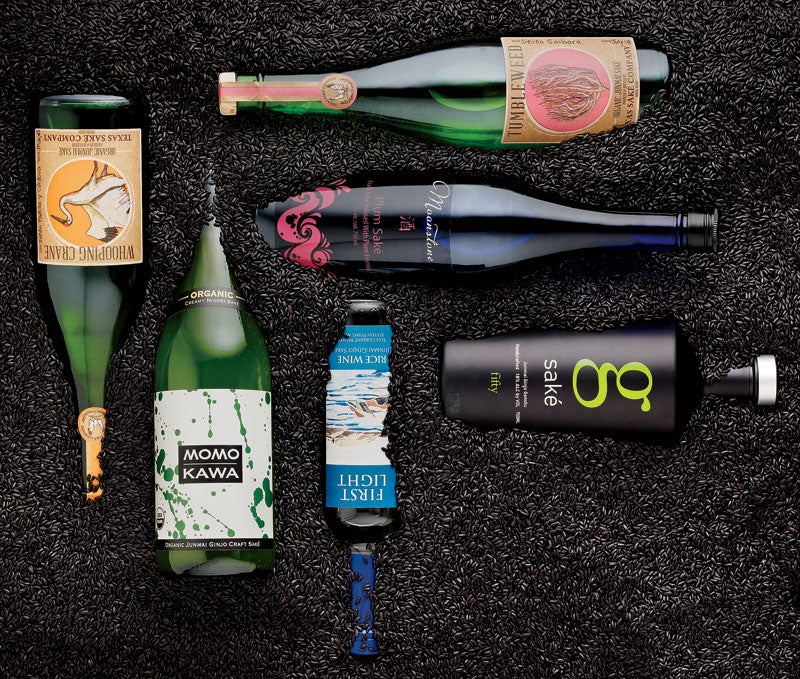In the past year, the number of commercial makers of craft sake in the U.S. has doubled. The reason for the boom: American rice has improved, and brewers, long stifled by a lack of industrial rice steamers and other traditional equipment, have gotten creative with how they make it. “We’ve used wine tanks, beer vats, even a screen for filtering diesel fuel,” says Jonathan Robinson, who oversees production at Ben’s Tune Up, a sake pub and beer garden in Asheville, North Carolina.
Sake Smarts
Before you order your next round, know these three essential types:
Junmai: Pure rice sake, clear and earthy. Best for neophytes.
Nigori: Unfiltered, cloudy, and bold. Best for IPA lovers.
Namazake: Unpasteurized, wild, typically on draft and only at brewpubs. Best for the adventurous.
Most of the new sake specialists are refugees from the oversaturated craft-beer industry, and they bring with them a reverence for small batches and bold flavors. Steve Vuylsteke, president of Oregon’s SakeOne, the country’s largest craft-sake brewer, says the industry is poised for growth; his company’s sales have jumped 10 percent annually over the past decade. “All it takes is a few people to say, ‘We can make good sake right here in the U.S.,’ and it will grow the same way craft beer did,” he says.
That’s good news for powder hounds: sake is free of the tannins and sulfites that contribute to hangovers. So you can indulge and still make first chair the next morning.
A sake brewpub is the best place to sample the new offerings. Ben’s Tune Up and Moto-I, in Minneapolis, are the only two in the country where you can get house-made, unfiltered sake on draft. But in the months ahead, look for Asheville’s Blue Kudzu, as well as Blue Current in Kittery Point, Maine, to join Texas Sake Company and SakeOne in bottling their wares.

